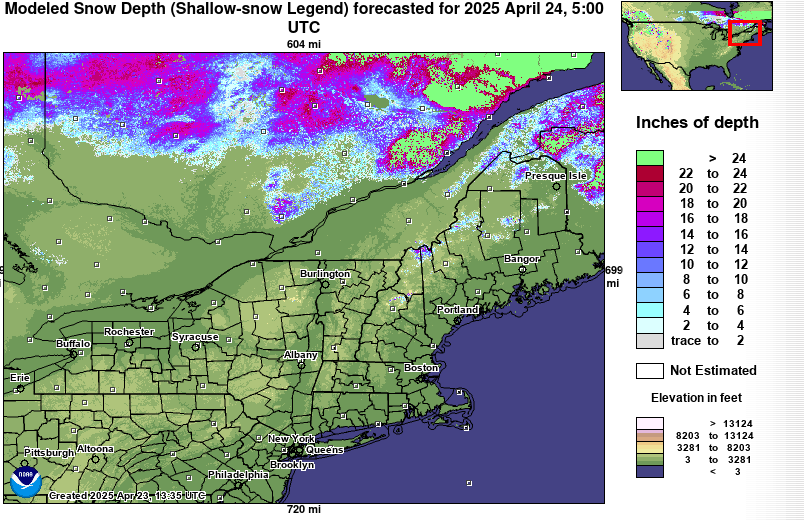We had another snowstorm Monday, and got another snow day off work as a result. Accordingly we had a nice day taking it in turns to work on college paperwork and lounge around the house playing with Roo. I knew at some point I'd have to go out to move snow, but with the storm lingering into the late afternoon, and forecast to continue to spin much of the evening and night time, there wasn't much point in getting out there earlier.
I'd just taken a shower and was changing to my evening "comfy" clothes of sweatpants and sweatshirt when a commotion occured and Aimee burst into the bedroom holding Roo.
"The snow plow is stuck in the driveway", she said. "Again!" she might have added, since this is not the first nor likely the last time that this particular problem has occurred. Accordingly I pulled a set of insulated coveralls over my sweats and went out like a good husband to see what had happened.
Our driveway is actually a turning circle at the end of a town road. The road belongs to the town, the circle to us. Accordingly, the town plow doesn't actually have to plow our driveway, and perhaps shouldn't, but the truck does have to be turned around, so the drivers often go all the way around the circle for their own convenience. This is good for us, since it reduces the scale of our plowing chore by about two thirds, so we like those times when the circle gets plowed. At other times, with less accommodating drivers, the truck does a three-point turn at the junction with the town road. If the driver attempts to plow the circle, but doesn't know where the road is supposed to be, he can get well and truly stuck. But he can also get stuck doing a three point turn in a narrow road, so "pick your poison."
This time, the truck was stuck pretty much on top of one of my five feet tall snowbanks, having tried to drive straight over it. I found the hapless plow truck driver and neighbor Ham standing around scratching their heads about what to do.
Then ensued one of those Chinese fire drills, wherein five different guys each puts forward some notion of how to fix things, and each one is fervently tried, to no avail.
I wasn't much help myself. Although it was obvious that a smaller more maneuverable piece of snow-moving equipment would be needed to dig the bigger truck out, the cold had penetrated to the starter motors of both the Land Rover
and the Kubota tractor. Both were frozen. At least, that's the best guess. The Rover's symptoms were clearer to diagnose -- the motor spinning without engaging the "Bendix" drive. That has happened before.
The tractor just clicked, a symptom that can be caused by anything from a seized engine through a dead battery to a ruined starter solenoid, of a jammed flywheel gear.
Either way, the upshot was I wouldn't be moving any of the snowbanks myself. Hamilton plowed with his old Dodge plow truck, while the plow truck drivers and I dug and then dug some more, stopping periodically to try to rock the truck in forward and reverse out of its snowbank. A second and third town plow arrived, meaning we now had five plow trucks on scene, plus my own Frontier which was just in the way. Eventually we'd moved all the snow that could be moved, and the big truck was still stuck. Some maneuvering of these vehicles was then required to get a second full-sized plow truck in place, with two strong chains, the proper amount of motive force was applied, and the first truck eventually popped out of its snowbank.
The town plow guys were then good enough to plow all my snow before leaving. I went inside for a well-earned dinner of fish pie, which I'd made earlier. I also ordered some additional block heaters online for both the tractor and the Rover. The tractor has one, but I'd lost the cable. I ordered an identical new one to get the cable. For the Rover, I ordered a magnetic heater to clamp directly to the starter motor.
Despite all the unexpected help I had moving snow this time, we were still pretty much snowed in the next day, with no Land Rover and no tractor to help. I began shoveling but was pleased when Hamilton came by and plowed the worst of the snow away with the Dodge. That was Tuesday morning. One of the two block heaters arrived Wednesday. Today, Thursday, we have eight more inches of snow before daylight, so I must go out with a power cord and fire up the block heater and try to get the Rover started and move snow.
I'm happy that I fitted the new heater in place last night, since I won't have to roll on my back in the snow at five am to do that today.
And so it goes. Winter. Another six weeks, says the groundhog.
Bloody old groundhog.























